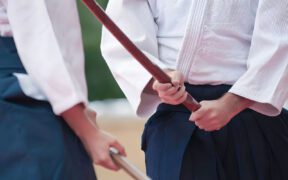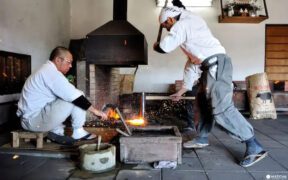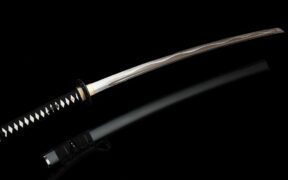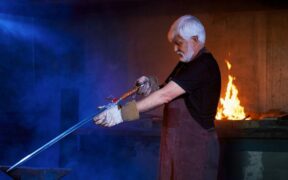Our content features commercial links to our products, committed to transparent, unbiased, and informed editorial recommendations. Learn More
Explaining Iaido: The Art of Drawing the Sword
NO AI USED This Article has been written and edited by our team with no help of the AI
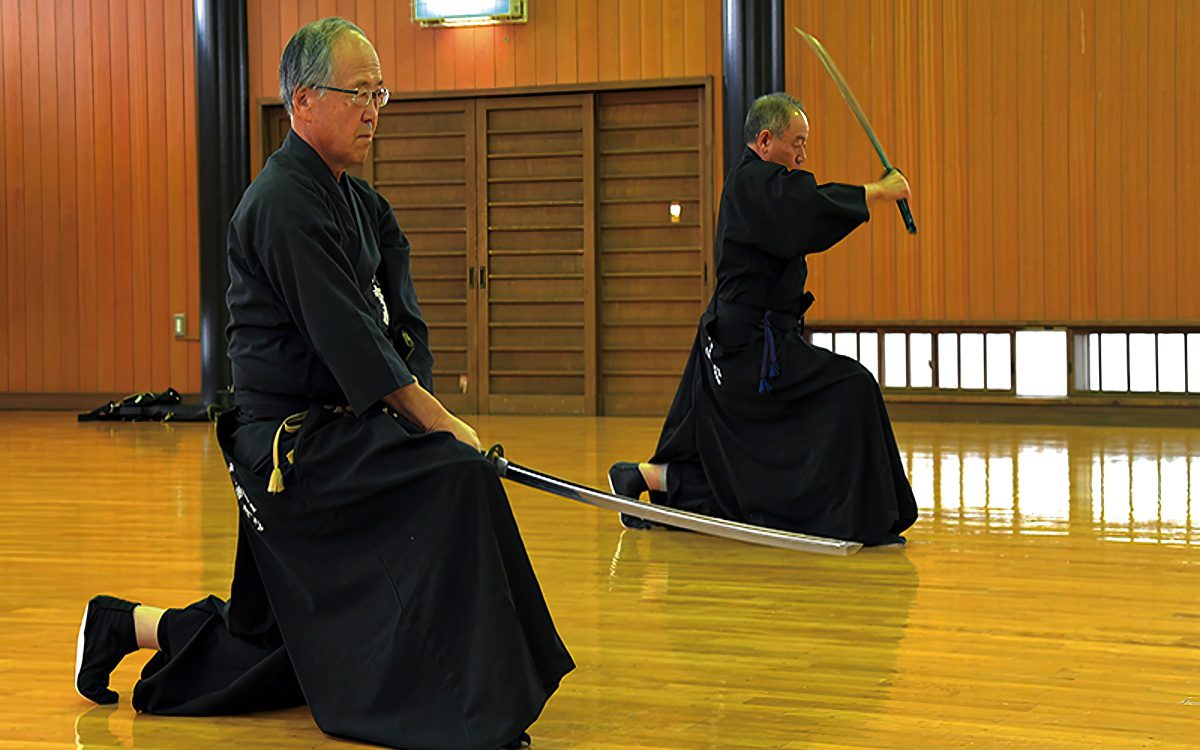
Iaido is the art of drawing and cutting with a sword in the same motion. It teaches the skills of attacking from the scabbard and striking down an opponent.
Today, the sword art is widely practiced as a martial art and a sport. However, it is more than just about defeating an opponent and showing off one’s skill.
Let’s explore the sword-drawing art of iaido, its basic concepts and techniques, the types of swords used in practice, and the history of the sword art.
What Is Iaido?
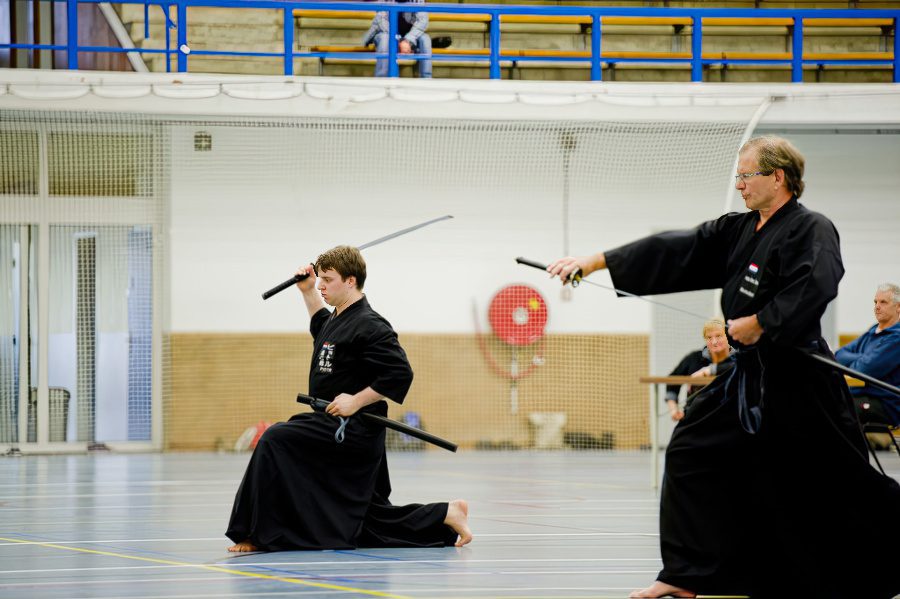
Iaido is a martial art that comes from iaijutsu. Iaijutsu was about drawing a sword quickly to fight or defeat an enemy. Both arts include drawing the sword, using it, cleaning it, and putting it back quickly.
Iaijutsu was created to react fast during surprise attacks. Both iaido and iaijutsu focus on mastering sword skills.
But iaido is more about self-improvement than fighting. It’s also a sport where people show their skills and judges pick a winner.
Basic Form and Techniques in Iaido
A kata, or form, in Japanese, is a set of movements to learn the right technique. The person practicing visualizes fighting opponents from various directions, either one at a time or in groups.
In iaido, a form usually has four steps: pulling out the sword, making a cut, cleaning the blade, and putting it back. It also includes different stances, ways to move your feet, and ways to dodge, all changing based on the scenario.
1. Drawing (Nuki Tsuke)
Drawing the sword is intended to bring it quickly into play and injure the enemy. Generally, the sword is drawn from the left side of the body, but it may be executed in various ways.
In a vertical draw, the sword is drawn just as it is, with its cutting edge facing upward. In a horizontal draw, the sword is turned horizontally when drawn, with its cutting edge outside.
However, the specific movements for drawing the sword vary depending on the situation. For example, a horizontal draw may be used when the swordsman is sitting indoors, where the narrow space and social situations limit his movements.
In some instances, a vertical draw can also be utilized while in a kneeling position.
2. Cutting (Kiritsuke)
While the initial draw is designed to injure the enemy, it is often not powerful enough to kill him. So, an additional cutting technique is executed to inflict as much harm on the enemy as possible.
The sword can be raised overhead, cutting downward at the enemy, or cutting to the right or left side of the enemy’s head or upper body. Generally, the downward cut is delivered with both hands.
3. Blood-Cleaning (Chiburi)
Blood-cleaning is the action of removing the enemy’s blood from the blade. Generally, a swordsman clears the blood using forceful, swinging motions.
While the right-hand grips the sword, the swordsman raises it to the right side of the body. Then, he swings it downwards sharply in front of the body.
4. Sheathing (Noto)
Sheathing refers to the act of returning the sword to the scabbard after defeating the enemy. Generally, a swordsman remains on guard, sheathing the sword without looking at it.
Hand positioning is critical when sheathing, though the way it is done may vary from system to system.
With the left hand grasping the scabbard’s mouth, the back of the blade is placed at the scabbard’s mouth, usually near the hand guard. The sword is pulled to the right until the point slips into the scabbard’s mouth, and then the blade slides into the scabbard.
Types of Swords Used in Iaido
Iaido training involves different types of swords, from wooden swords to dull metal swords and sharp blades (shinken).
In practice, the sword is carried on the left side, with the sharp edge up, and tucked into the belt. The sheath (saya) goes between the belt’s second and third layers.
If there’s a short sword, its sheath fits between the first and second layers. Both sheaths face left, with the handles of the long and short swords lining up with the belly button.
1. Iaito

Iaito is a practice sword without a sharp cutting edge for safety reasons. Its unsharpened blade, usually of nickel or zinc-aluminum alloy, replicates the weight and balance of an actual blade. Iaido practitioners use the iaito for practicing solo techniques but never in contact drills.
2. Bokken or Bokuto
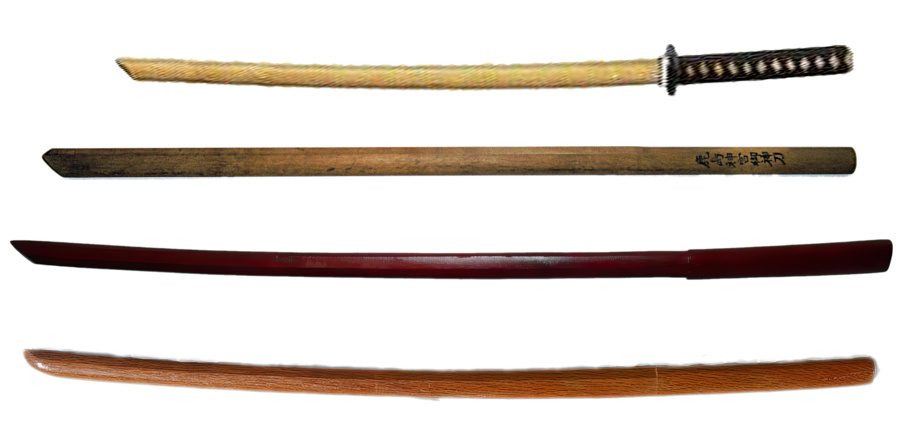
A bokken or bokuto is a wooden sword constructed from solid, one-piece wood similar in weight and balance to a Japanese sword. Unlike the iaito, a bokken has no scabbard to sheath the blade.
Iaido training involves practicing kata with a partner using wooden swords. The partnered forms (kumitachi) require contact between the practitioners’ blades, and iaido practitioners treat their wooden swords like sharp swords.
3. Shinken
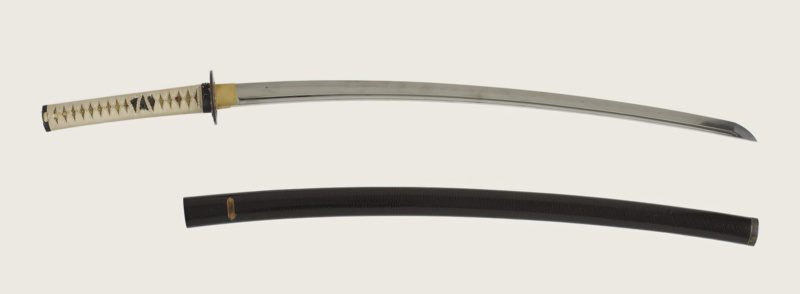
A shinken is a real sword with a sharp, fully-functional blade. Instructors (sensei) and masters often use a live blade for their own practice, usually for tameshigiri test cutting against various targets.
However, beginners are prohibited from using shinken or katana because of the danger involved.
History of Iaido
In the 1500s, Hayashizaki Jinsuke Shigenobu invented the art of drawing swords quickly, leading to what we now call iaido. He started the Shimmei Muso-ryu school. Not much is known about his exact techniques, but his teachings spread through students.
By the 1600s, Hasegawa Eishin, the seventh leader, improved these techniques, renaming the school Muso Jikiden Eishin-ryu. Another important school, Muso Shinden-ryu, also came from Hayashizaki’s teachings. This sword art became popular with the elite samurai.
Nakayama Hakudo, from Muso Shinden-ryu, named the art iaido and made it well-known in Japan after WWII. Today, Muso Jikiden Eishin-ryu and Muso Shinden-ryu are among the most followed iaido styles.
Facts About Iaido
Iaido is the martial art of drawing the Japanese sword. In iaido training, practitioners learn the appropriate technique for various attacks, including the proper stance, balance, mental focus, and footwork.
The term iai refers to the art of drawing the sword.
Iai is the name given to a sword motion where it is drawn from the scabbard, a cut is made, the blood is removed, and the sword is returned to its scabbard. It is used in iaido and iaijutsu, in which do means “way”, while jutsu means “technique”.
The respective names imply that iaido focuses on personal development, while iaijutsu is oriented toward practical combat applications. Iaido is also associated with kendo, which evolved from kenjutsu, an aggressive style of Japanese swordsmanship.
Iaido is much more than a sword-drawing art.
The suffix –do is a term used as a concept of the way, the road to self-development, or a spiritual path followed by students of budo disciplines. The suffix is used in iaido, kendo, aikido, judo, and jodo.
In some contexts, the term iaido can be translated as the way to meet with one’s own existence. Therefore, iaido is more focused on character development, de-emphasizing the practical applications of the Japanese sword.
Iaido training utilizes kata and is a more formal Japanese budo (martial way).
Iaido training is very formal, from the specific moves (kata) to the bows done during practice. It happens in a special place called a dojo. Practitioners start by bowing and then sitting in a pose called seiza before doing other things in the dojo.
Kata, or routines, pretend to deal with attacks from all directions. Iaido students practice these from sitting, kneeling, and standing positions.
The main goal of kata in iaido is not for fighting but for the practice itself. There are many types of iaido, and the routines can differ between them.
Iaido practitioners are called iaidoka.
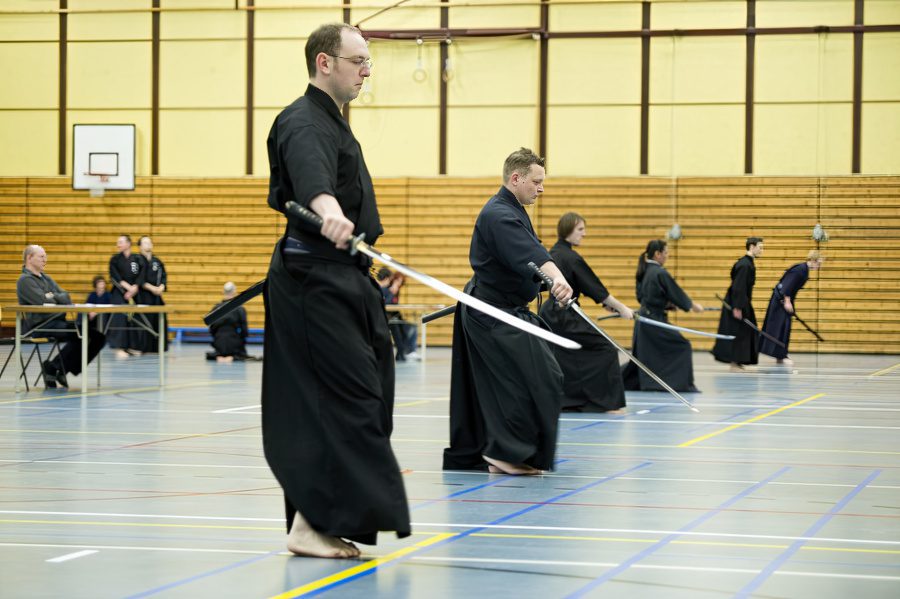
The term iaidoka means “iaido-person” or “iaido professional”, while a teacher or instructor is commonly called sensei. In the dojo, iaido practitioners wear traditional martial art uniforms, which generally consist of a light jacket (juban or keikogi) on the upper body, a wide belt (obi), and wide trousers (hakama).
Iaido is not the same as fencing.
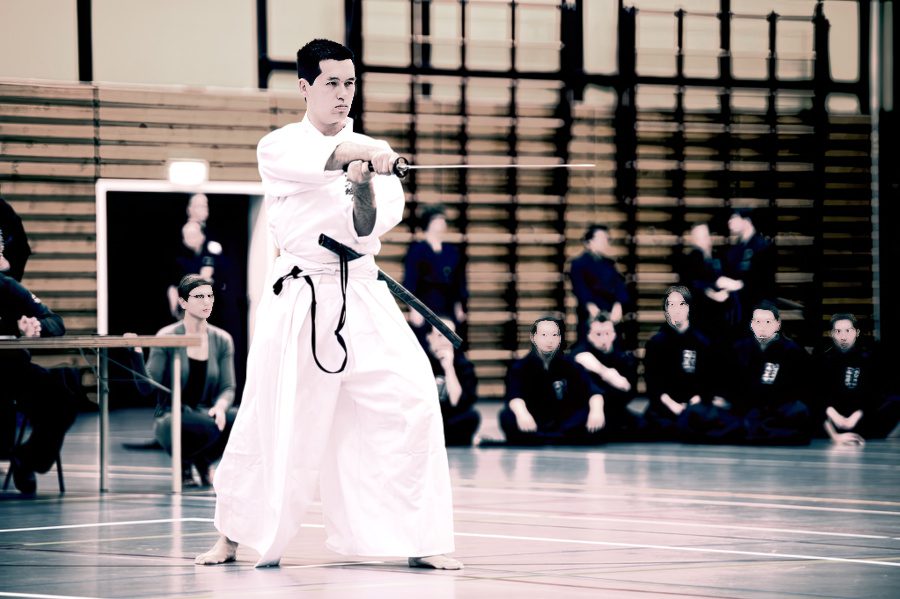
Iaido involves aggressive fighting actions, and the techniques are immediate. On the other hand, fencing involves many parrying techniques, which opponents naturally give and take.
The cut in iaido is more powerful, designed to inflict as much harm on the enemy as possible. On the other hand, the cut in fencing allows the fencer to rebound into follow-up techniques.
Japanese federations have standardized the forms and formalities of iaido practice.
Iaido is also studied outside of a particular system. The two major governing bodies for iaido are the All-Japan Iaido Federation and the All-Japan Kendo Federation, which established their own forms (kata) specifically for their organization. Most practitioners belong to one or the other federation.
Still, some traditional systems have their own independent school and instruction. In the United States, iaido instruction is often found in schools teaching Japanese kendo or other schools where iaido is supplementary to martial arts usually taught.
Iaido also represents the spiritual traditions of Japan.
Today, several martial arts are practiced with Zen-based spirituality. Applying Zen to martial arts infuses spiritual, internal, and personal aspects to the training.
Zen Buddhism heavily influences iaido. Generally, instructors of traditional Japanese martial arts are expected to teach not only technical but also philosophical and spiritual aspects of the system.
